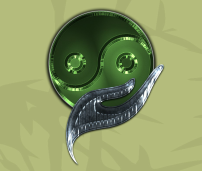|
Chances are, you have had what you might refer to as a "knot" in one of your muscles at some point. Perhaps you tell your massage therapist where your knots are every time you come in for an appointment. Maybe you've heard other people complaining of knots, and wondered if that pain you've got is caused by knots. Just what is a "knot," anyway?
What it isn't Clearly, when we talk about "knots" as a source of aches and pains, we are not talking about measuring nautical speed. More importantly, do not imagine that your muscles are actually tied in a knot like the loose ends of your shoelaces. In order for this to be the case, your muscles would first need to detach themselves from your bone (or tear apart somewhere in the middle). If that happened you wouldn't be asking "why is my back so achy?" you would be asking "why am I a screaming puddle of suffering on the floor?" In all seriousness, you should not be overly concerned if you have a "knot" in your muscles. They are common, usually easy to treat, and not necessarily indicative of injury or dysfunction. Think of them as normal wear and tear on your body. "Knot" is also not a terribly specific medical term. It can refer to a number of different physiological phenomena, owing to the similar way they feel when you experience them. To an experienced therapist, however, they feel different to touch, and each has its own indication for how treatment should be approached. Hypertonicity Hypertonicity means that the resting tone or tautness of a muscle is higher than it should be for ideal, efficient function. A number of things can cause hypertonicity - postural strain, repetitive/overuse, stress, etc. It normally affects a whole muscle, making that muscle feel "tight," and often causing soreness at the muscle's attachment points or in adjoining muscles and tissues. Techniques used to address hypertonicity include many variations of stretching, direct pressure, and tissue mobilization. Adhesion Adhesion means that muscles or other tissues are adhered (stuck) to other tissues in ways that are not ideal. One of the causes of adhesion is the healing process: as muscle and other tissues are stitched back together after being torn, things sometimes get stuck where it's not necessarily good for them to get stuck. In the case of major injury, adhesion is obvious and long-lasting, and we call it scar tissue. But it can occur more subtly, building up a little at a time from the micro-trauma caused by hard labor or working out. Trigger Points A trigger point is a local contraction in a limited number of fibers of a muscle. This is the closest thing to a "true" knot. It usually appears as a small nodule in a highly taut band of muscle, and feels like a very tender spot that, when pressed, causes pain to a broader area (this is called referred pain). It may even refer pain to an area distant from the trigger point itself. A number of factors can cause trigger points, but often they are a result of physical trauma or muscle overload. So... do you have knots? The answer is that you probably do have knots of some variant, to some degree of severity. You should get a massage. |
Welcome
This area of the blog is for discussion on topics specific to massage, wellness, and the massage industry. If there is a topic you'd like to see discussed here, please ask! Archives
June 2023
topics
|

 RSS Feed
RSS Feed